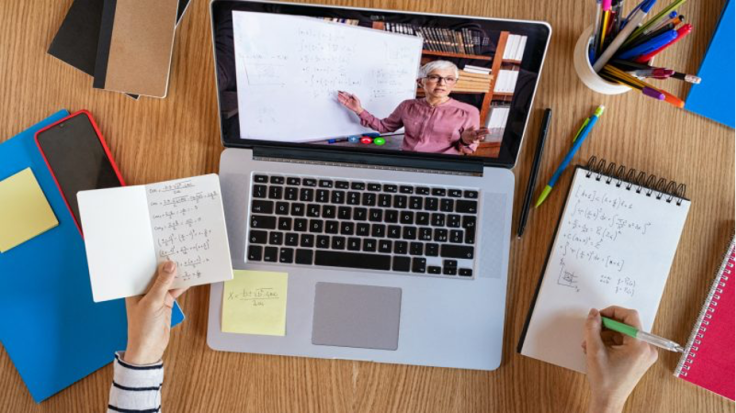The Academic Shift: How the School System is Adapting to Changes Caused by COVID-19

Let’s not beat around the bush, 2020 has a been a rough year. With prevalent civil unrest, mass protests, climate change issues such as wildfires and hurricanes, and a deadly world virus that has taken the lives of more than 1.2 million people, if given the choice to skip this year, most of us would’ve chosen taken that decision.
Nonetheless, the show must go on and instead of looking glum and complaining about our present, we must adapt to world circumstances with a positive attitude and flexibility; which is must easier said than done! And, although everything from education to business and travel to shopping has dramatically shifted due to COVID-19, humans have been working together to reshape our world.
Of all things affected by the coronavirus pandemic, the most significantly agitated sector has been that of education. As we are now many months into the pandemic crisis, educators are still struggling to find solutions to continue providing students with the necessary knowledge to succeed while at the same time respect social distancing regulations.
Changes to the Traditional Classroom
To quickly avoid the spread of coronavirus when it hit the US in the early months of 2020, many schools were forced to close down. Also, since we are dealing with a global crisis, more than 1.2 billion students were out of the classroom in the early stages of COVID. Therefore, when education centers began to close down in the US, and across the world, the uncertainty of when they would be able to open again caused parents and educators alike to start to panic about the pupils future.
The solution? The first answer to school closures was online learning via a videoconferencing app that keeps all students at-home and out of harms way. Educators rapidly scrambled to learn the functions of tools like Zoom, Google Meet, and Skype to ensure that student’s learning process would not be changed too much. Homework assignments were sent through email and textbooks were replaced with interactive online resources from reputable education websites.
Albeit rocky at first, the virtual classroom was the best way to keep learning safe while waiting for new instructions from the White House about how to transition back safely to the traditional in-person classroom. However, now that schools have been re-opened in the US across all states with certain regulations such as socially-distanced desk placements, regular temperature checks, and lunch in small groups, the traditional classroom still poses a huge threat to all parties involved and online lesson still remains a valid option.
The Rise of Online Learning
In the past decade, the online education industry has exploded and new tutoring companies pop up every few weeks like mushrooms. Many of us actually prefer learning from the comfort of their own home. One-on-one virtual courses on online tutoring platforms are great for those who need remedial support to succeed at school. Also, the sheer amount of beautifully crafted online resources that are used in a virtual classroom are much more popular than textbooks amongst learners born in the digital age.
The statistics show that virtual learning is going nowhere since according to research studies conducted, the online education industry will be worth US$ 350 billion by 2025. With an ever-growing profit margin and the overall usefulness as an alternative for those who have a hard time acquiring knowledge in a school setting, online learning is tailormade for Generation Z learners in the United States.
Additionally, largely due to the rapid advancement of technology in recent years, video calling platforms, that were previously mentioned in this article, such as Skype and Zoom were already in use to connect people from around the world which made online users feel comfortable transitioning to online learning. Especially for older learners and parents who had to set up virtual classes for their young children.
Nonetheless, is online learning perfect for all students? Is it the best solution to learn during COVID-19?
The Multiple Challenges of Online Learning
As is the case with all things in life, there are pros and cons to online learning. And, due to the massive push towards virtual classes this year, the advantages and disadvantages have been examined with a fine-tooth comb and become clearer than ever before. For all those involved in the education industry, the advantages and drawbacks must not be ignored in order to continue providing students with a positive learning experienced in the era of COVID.
Obvious positives of online education for students include learning from the comfort of your own home, less of a commute to school, zero personal contact with classmates who may have COVID-19, and complete adherence to social distancing laws. Also, through online classes, students undergo a more independent learning style which greatly contributes to the academic results of some individuals.
What are some of the drawbacks? The challenges of virtual classes have become many and include things such as poor internet connection for pupils living in rural areas, the access to resources is limited and practical classes such as labs are virtually impossible. Additionally, one of the principle roles of a teacher is to closely monitor progress and that is made difficult through online classes and, in some cases, motivation is lost.
Another thing to consider is that, the formative years are especially important for social development and interaction amongst youngsters and through a video calling platform it is quite challenging for children to interact effectively. Also, with online education, parents who are still required to work outside the home are presented with the obstacle of finding someone to stay home with their minor to pass classes.
All in all, the COVID-19 pandemic has created a paradigm shift in the way classes are conducted and without a current vaccine or cure, all parties – parents, teachers, and students – must adjust to frequent changes and determine what is best for development and safety.




















